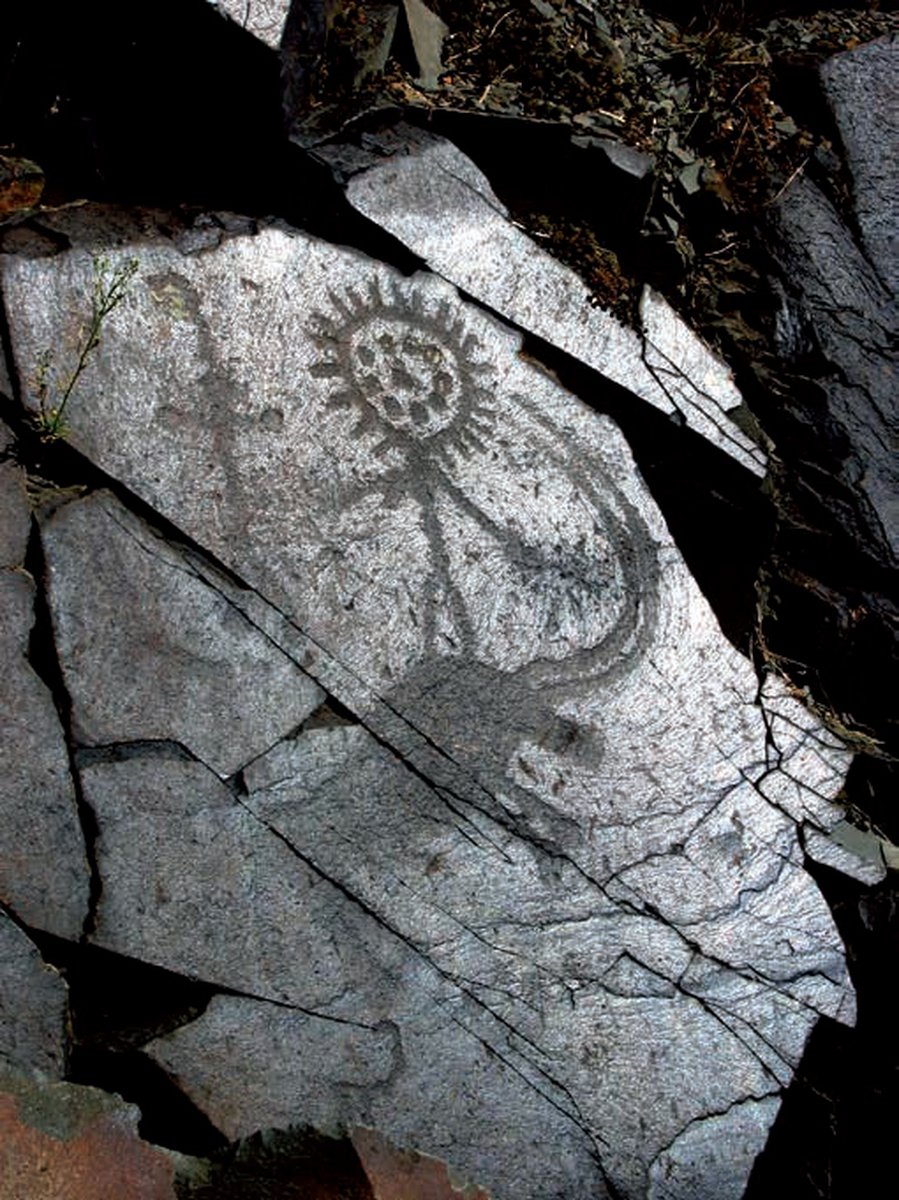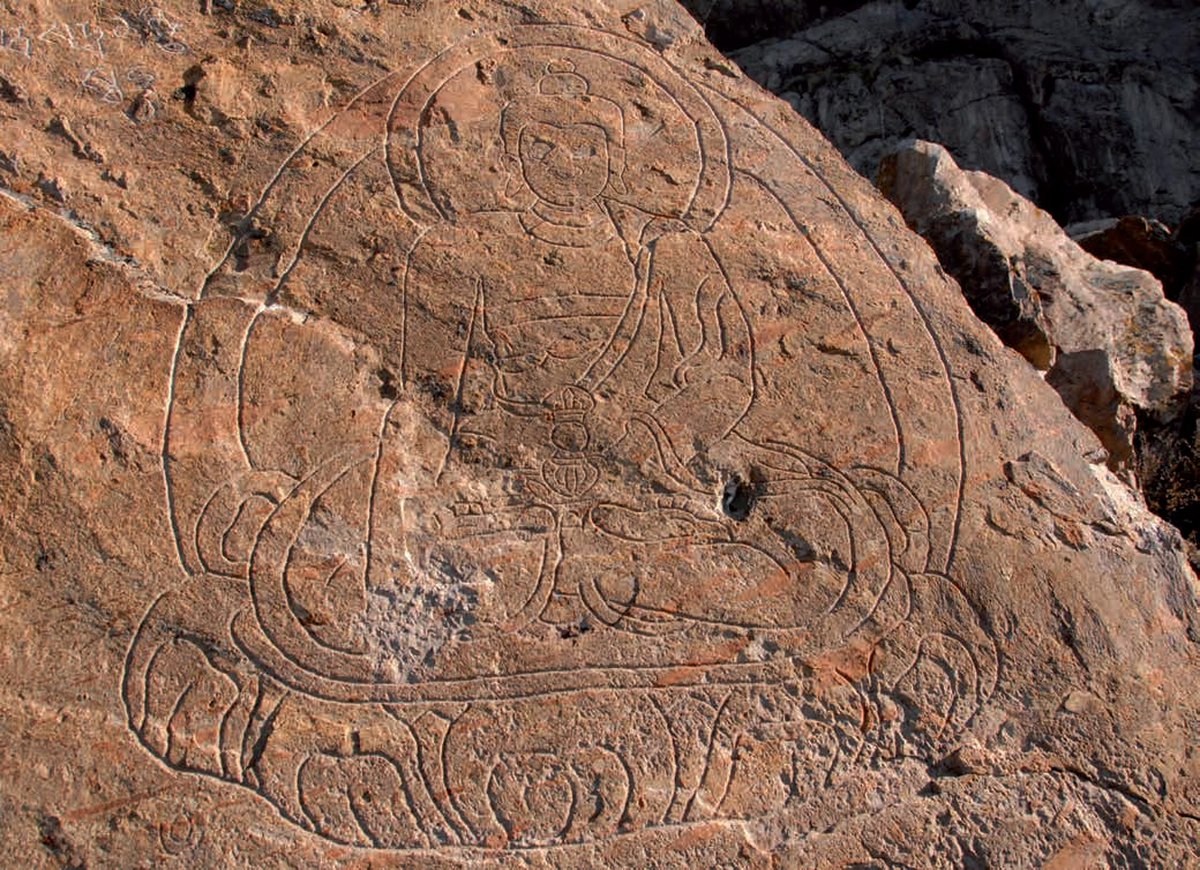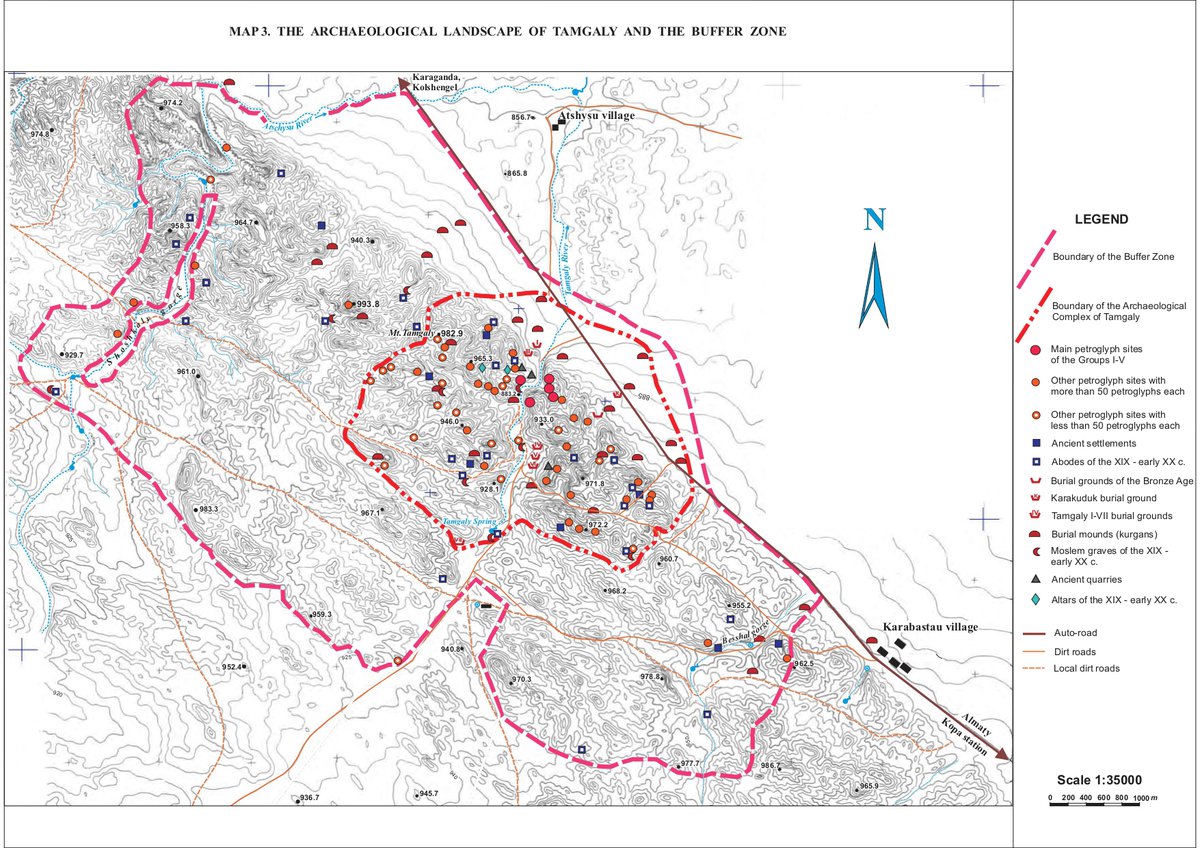Petroglyphs of the Archaeological Landscape of Tamgaly
29 Dec 2022
Tamgaly, petroglyphs in the archaeological landscape of Tamgaly/Tanbaly. The monument is located in the south-east of Kazakhstan, in the Tanbaly tract, located in the south-eastern part of the Chu-Ili Mountains (Shu-Ile Taulary, kaz.), 4 km northwest of the village of Karabastau and 170 km northwest of Almaty (Zhambyl district, Almaty region). The monument, according to the overwhelming majority of scientists, is one of the most striking monuments of rock art in Kazakhstan and Central Asia.
In addition to the unique petroglyphs located directly on the rocks of the Tanbaly Canyon, localized on six groups of petroglyphs, there are numerous individual locations, of which there are about 50, in total 5,200 images inside the territory of the World Heritage Monument. The archaeological complex of Tamgaly includes settlements and burial grounds, as well as altars, quarries.
The petroglyphs of Tamgaly were discovered by an archaeological team led by A. Maksimova in 1957, who conducted excavations at the Karakuduk II burial ground. Since the 1970s, A. Maryashev was engaged in the study of petroglyphs, later an expedition under his leadership, as well as A. Medoev and B. Aubekerov, who made a significant contribution to the study of petroglyphs of Kazakhstan. Since the 1990s, the expedition, which continued archaeological research, was led by A. Rogozhinsky. A huge number of scientists, local historians, and volunteers have contributed to the common cause.
The petroglyphs of Tamgaly were embossed in the picketage technique with stone or metal tools. All of them were divided into 48 independent complexes during the documentation. A real masterpiece of rock art is considered to be a plane of considerable size with an impressive six images of "sun-headed" deities, embossed on top of a string of small images of dancing and praying people. The large size of the early petroglyphs, the unique visual content and iconography place them on a par with the most valuable petroglyphs of the rock art of Central Asia.
Most of the petroglyphs are located in the middle and lower parts of the main gorge, as well as in the sais located northwest of the main gorge, adjacent to Mount Tamgaly. The total number of drawings in the six main groups is 3200. There are 2,000 more petroglyphs on the rest of the UNESCO monument.
Among them are 30 images of "sun–headed" deities or priests, mummers, warriors with maces, married couples, women in labor, as well as multi-figure compositions depicting people and animals, animal hunting scenes and sacrifice scenes, bulls, horses. Images of chariots, prints of "divine feet" are rare, but solar signs are numerous. Most of the petroglyphs belong to the Bronze Age. Drawings made in the Saka "animal" style are mostly placed separately from the more ancient petroglyphs, but in some cases complement or even overlap them. Medieval rock carvings are carved on the hills surrounding the gorge and in the adjacent waterless sais. The central complex is distinguished by the densest concentration of petroglyphs and, presumably, altars, which indicates a possible ceremonial purpose of this place for sacrifices. Inscriptions were also stamped on the rocks. Thus, there are Turkic runic and Oirat inscriptions in the central gorge.
Two Tibetan and several indeterminate inscriptions have recently been discovered in the passage gorge to Shoshkaly. The sacredness of the Tanbaly area is determined by the presence of a unique "open–air exposition" - a synchronous and dense group of petroglyphs, with a diverse (universal) repertoire of images of scenes with vivid anthropomorphic and zoomorphic images, which, as we believe, decorated the ancient sanctuary. They are made in a single stylistic manner, denoted by the phrase "artistic" style of Tamgaly" of the Middle Bronze Age. It is confirmed by numerous and unique images of later periods of history: the so-called Begazy, as well as Sakas, Wusuns, Xianbis, Huns, Iranians, ancient Turks, Dzhungars and Kazakhs. Each subsequent "generation" sought to leave its mark on the sacralization of the area, paying tribute to the holy place.
The authentic evidences of the sacredness of Tamgaly are numerous updates of petroglyphs by the local population of different historical periods. For example, on the scene of the Bronze Age with the sacrifice of a bull, the animal was turned into a horse with a rider in ancient Turkic times. In turn, two "archaic" warriors are depicted under the stage, depicted clearly in the "Sauiskandyk" style, older than the "Tamgaly" one. Almost every major plane of the central gorge of Tamgaly is distinguished by similar chronological layers. Also, single visitor images, for example, the "altar of fire" are related to the visit of this sacred place by representatives of the hierarchy of the Iranian priesthood in antiquity. Sacred inscriptions and images of ancient Turks and Dzhungars testify to the sacred veneration throughout the four millennia of Tamgaly history.
These petroglyphs often belong to the masterpieces of rock art of their chronological periods in terms of artistic merit and the very uniqueness of the images. For example: "beaked" deer, deer in a "flying gallop", the affiliation of some images is still debatable, for example, the male seated deity refers to the ancient Turkic or Dzhungar wave of Tamgaly sacralization. Many of the Tamgaly petroglyphs find direct analogies in rock art and extant on other objects and objects of art in wide areas from Transbaikalia and Mongolia to Northeastern Iran and Scandinavia. This is in the full sense an encyclopedia of sacred signs, images, plots, whole pictures of the World, at different stages of human development.
In 2004 The petroglyphs of the archaeological landscape of Tanbaly have been included in the UNESCO World Cultural Heritage List. Tamgaly was nominated according to the following criteria: "A numerous and interdependent group of petroglyphs with sacred images and altars, together with associated settlements and burials, which provides substantial evidence of the material life and beliefs of the predominantly nomadic peoples of the Central Asian steppes from the Bronze Age to the present."
The natural landscape of Tamgaly is also unique, and many representatives of the plant and possibly animal world are endemic.
Горячев А.А. Тамгалы-Тас // Cакральная география Казахстана: Реестр объектов природы, археологии, этнографии и культовой архитектуры / Под общей редакцией академика НАН РК Байтанаева Б.А. – Алматы: Институт археологии им. А.Х. Маргулана, 2017. – Вып. 1. – С. 165-170.
Файл номинации Петроглифов археологического ландшафта Тамгалы в Всемирное наследие ЮНЕСКО





